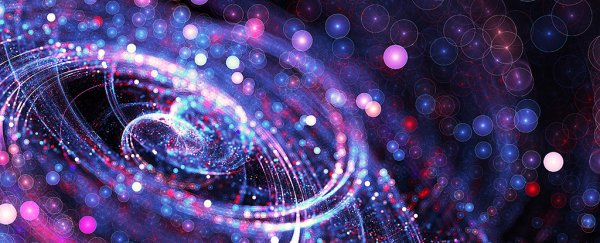Creating a quantum computer requires an ability to stroke the edges of reality with the quietest of touches. Too much 'noise' and the delicate state of the system collapses, leaving you with a very expensive paperweight.
One way to reduce the risk of this occurring is to build in checks and balances that help to shield the blurred state of reality at the core of quantum computers - and now scientists have proposed a new way to do just that.
Theoretical physicists from RWTH Aachen University in Germany have proposed what's known as a 'synthetic magnetic field', which they think could help protect the fragile qubits needed in a quantum computer.
"We have designed a circuit composed of state-of-the-art superconducting circuit elements and a nonreciprocal device, that can be used to passively implement the GKP quantum error-correcting code," the team writes in their paper.
The basis for the design is a concept that's nearly 20 years old (we'll get to that in a moment), one that simply isn't feasible based on its requirement of impossibly strong magnetic fields. The new approach attempts to get around this issue.
Instead of the solid, bit-based language of 1s and 0s that informs the operations of your smartphone or desktop, quantum computing relies on a less binary, and far less definitive approach to crunching numbers.
Quantum bits, or qubits, are individual units of its language based on the probability of quantum mechanics. String enough together and their seemingly random tumbling sets the foundations for a different unique approach to problem solving.
A qubit is an odd creature though, something that has no real equivalent in our day-to-day experience. Unobserved, it could be simultaneously in the position of 1, 0, or both. But as soon as you look at it, the qubit settles into a single, more mundane state.
In physics, this act of looking doesn't even need to be an intentional stare. The buzz of electromagnetic radiation, a stray bump of a neighbouring particle… and that qubit can quickly find itself part of the scenery, losing its essential powers of probability.
This 'noise' only gets worse as we grow devices to include more qubits, something that is necessary to make quantum computers powerful enough to be capable of the high-level processing we expect of them.
A promising method for ensuring a qubit stays fuzzy long enough to be useful is to entangle it with other qubits located elsewhere, meaning its probabilities are now dependent on other, equally fuzzy particles sitting in zones unlikely to be slammed by the same noise.
If that's done right, engineers can ensure a level of quantum error correction – an insurance scheme that allows the qubit to cope with the occasional shake, rattle, and roll of surrounding noise.
And this is where we return to the new paper. Back in 2001, a trio of researchers - Daniel Gottesman, Alexeir Kitaev, and John Preskill - formulated a way to encode this kind of protection into a space as an intrinsic feature of the circuitry holding the qubits, potentially allowing for slimmer hardware.
It became known as the Gottesman-Kitaev-Preskill (GKP) code. There was just one problem – the GKP code relied on confining an electron to just two dimensions using intense, large magnetic fields in a way that just isn't practical. What's more, processes for detecting and recovering from errors are also fairly complicated, demanding even more chunks of hardware.
To really get the most out of the GKP code's benefits, quantum engineers would need a more passive, hands-off approach for shielding and recovering a qubit's information from noise.
So in this innovative new proposal, physicists suggest replacing the impossibly large magnetic field with a superconducting circuit comprising of components that serve much the same purpose, ironing out the noise.
The technicalities of the setup aren't for general reading, but Anja Metelmann at APS Physics does a top job of going through them step-by-step for those eager for details.
For it to work, there would need to be a way for photons – effectively ripples in the electromagnetic field that carry the electron's forces – to be manipulated by that very field. Given the photon's neutrality, this just isn't a possibility.
There is a workaround, though. In recent years physicists have found a way to control photons so they can be channelled like electrons, by manipulating the optics of a space so it takes on certain magnetic-like characteristics.
So-called synthetic magnetic fields permit photons to be directed, giving engineers a way to craft devices in which light waves can be forced to behave more like a current.
The new paper lays out a way to use this synthetic magnetic field to protect a theoretical single electron in a crystal, confined to a 2D plane. When they ran calculations to see how it would react when subjected to a strong, real magnetic field, which usually would interfere with the system, they showed that their new set-up could protect it.
"We find that the circuit is naturally protected against the common noise channels in superconducting circuits, such as charge and flux noise, implying that it can be used for passive quantum error correction," the team explains in their paper.
Before we get a working prototype of this quantum error-correcting machinery, there are plenty of kinks to work out experimentally. It's all good on paper, but left to be seen if the technology does cooperate as expected.
In time, we might have a relatively simple device that turns an impractical – but otherwise efficient – concept for scaling up quantum computers into a real possibility, opening the way for error tolerant technology that has until now been mostly theoretical.
This research was published in Physical Review X.
